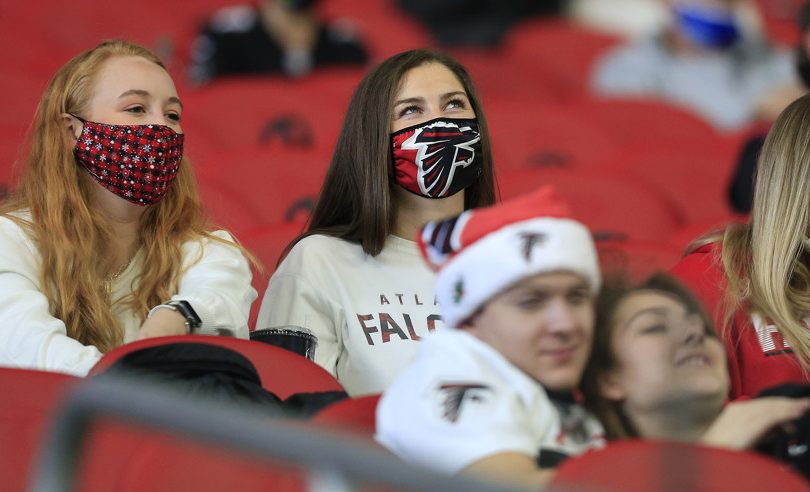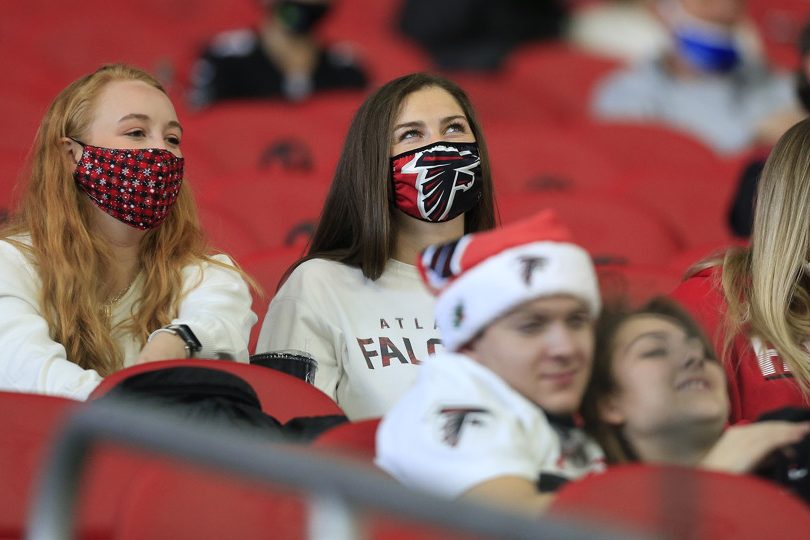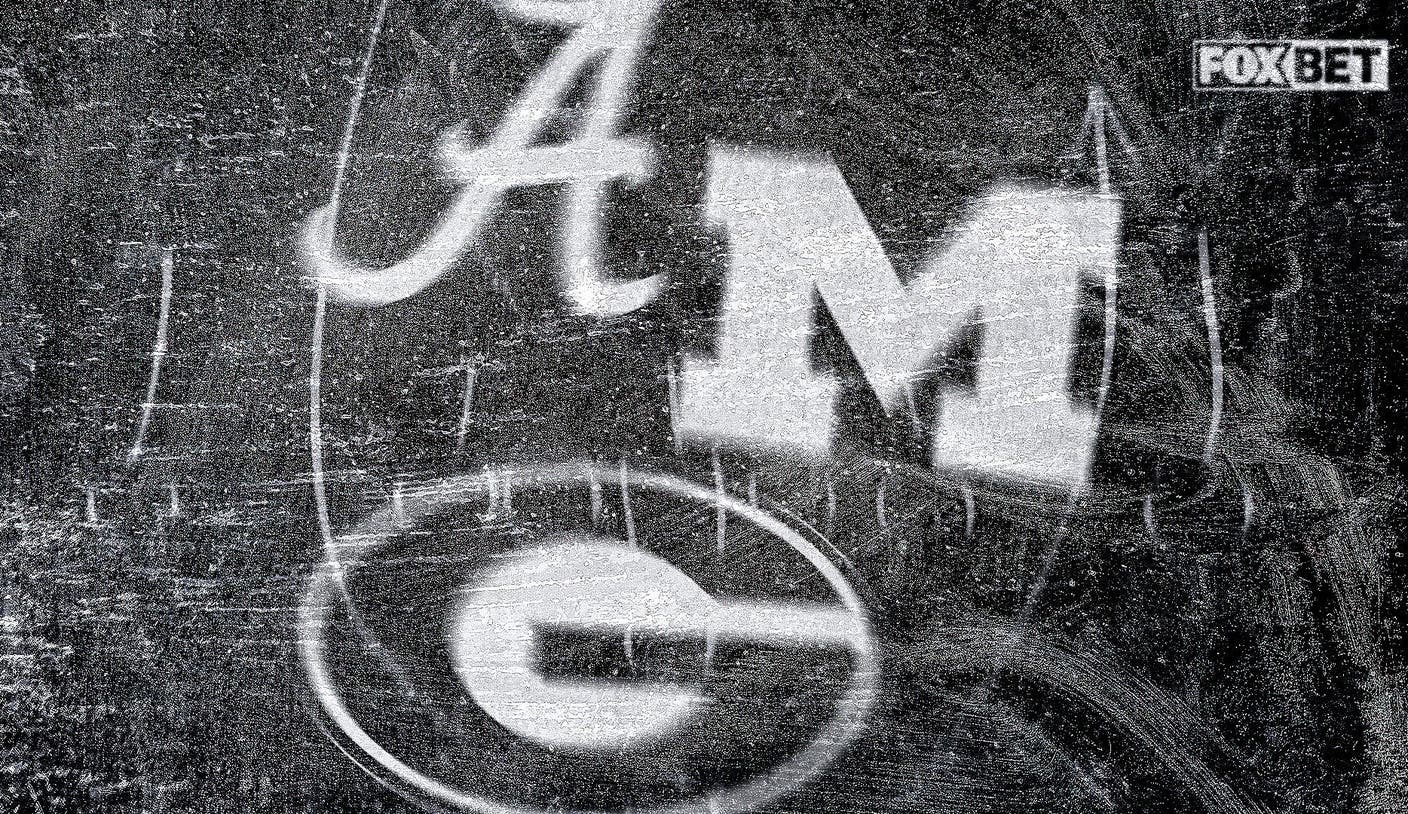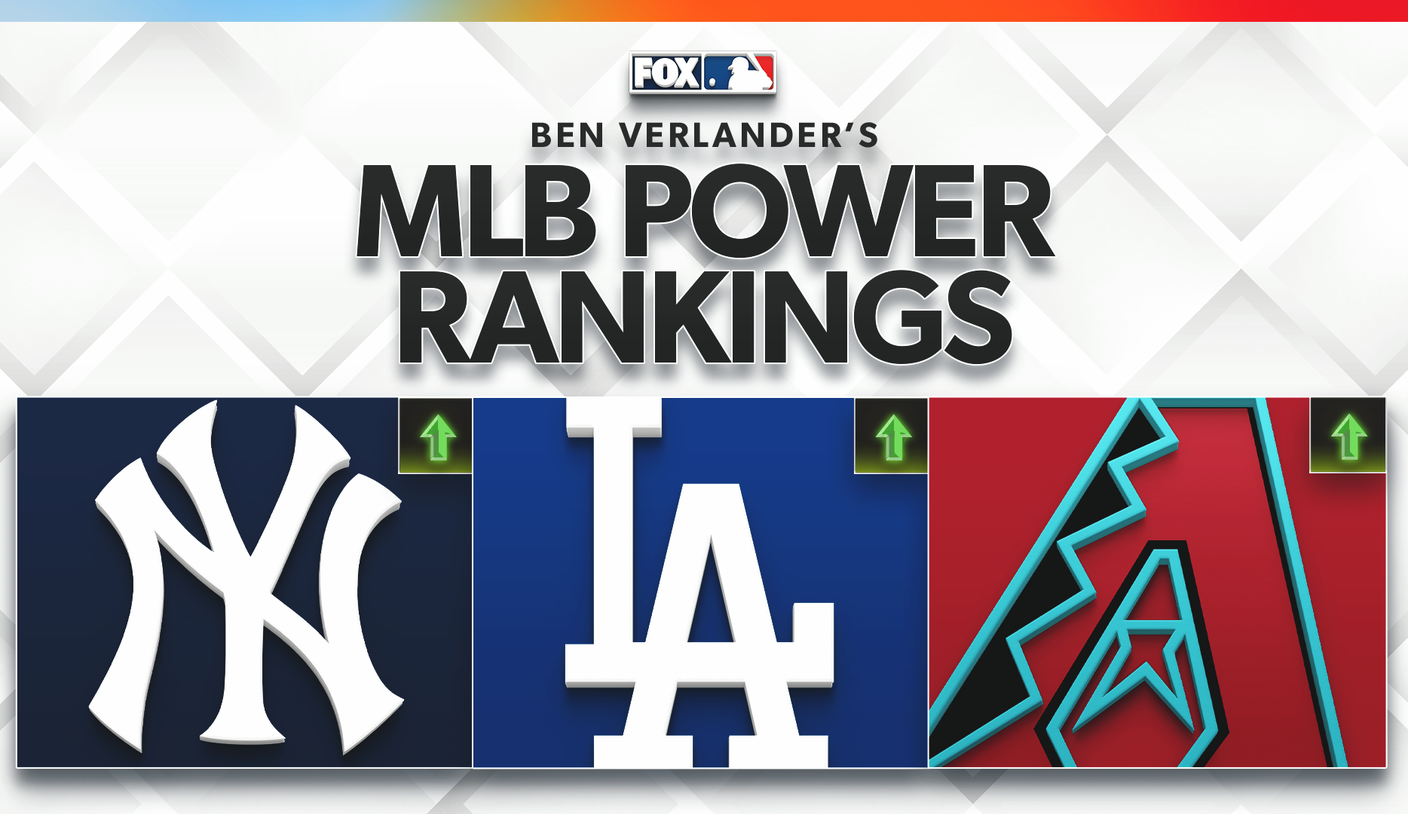NFL Betting: Are Some Fans Better Than No Fans For Home Field Advantage?
December 13, 2020 – by Jason Lisk

Fans in the stands in Atlanta for the game against New Orleans (Photo by David John Griffin/Icon Sportswire)
Entering Week 14, home teams in the NFL are 97-94-1 in 2020, barely winning over half their games to date.
Over the previous five seasons, home teams have won 56.5% of the time, so this year is a drop of almost 6% so far compared to recent seasons.
The most obvious difference in this season is the lack of fans compared to past years, because of the coronavirus pandemic. Most games have been played without any fans present, while some have had reduced crowds but allowed some fans to attend.
One logical question is, can even a highly reduced number of fans provide any sort of incremental home field advantage, compared to a totally empty stadium?
Now that we’re roughly 3/4 of the way through the season, let’s look at what has happened so far.
Home Teams With Fans versus Without Fans
Content:
ToggleUsing the attendance data at Pro Football Reference and matching it up with our game and spread results for 2020, there are 83 games that have had fans in attendance and 109 games that have not so far this season.
Here is the win-loss and against the spread performance for home teams for all games through December 11. (Note: the San Francisco-Buffalo game in Arizona is classified as neutral site.)
| Fan Status | W | L | T | WIN PCT | ATS W | ATS L | ATS T | ATS PCT |
|---|---|---|---|---|---|---|---|---|
| With Fans | 45 | 38 | 0 | 54.2% | 41 | 42 | 0 | 49.4% |
| Without Fans | 52 | 56 | 1 | 48.2% | 51 | 58 | 0 | 46.8% |
The home teams indeed have won a higher percentage and covered a higher percentage of games when there have been some fans in attendance.
However, there are some factors that suggest maybe we shouldn’t draw strong conclusions based only on that difference.
Teams That Happened to Have Fans Have Been Better Teams on Average
The first observation is that teams that have had fans in attendance have been better on average, and have also been better relative to preseason expectations so far.
Differentiating Fan vs. No-Fan Teams
Before we jump into the numbers, here’s how we’ve broken up the categories of teams:
No Fan Teams. Fourteen (14) different teams have had no fans in attendance for any game. These teams are mostly located on the West Coast, in the Northeast, and in some states in the Upper Midwest.Fan Teams. Only six teams have had fans in attendance for every game, and another five have had fans at every game besides the first of the season.
2020 Performance so far
Fan Teams have won 56.1% at home, and 52.3% on the road. They had an average preseason predictive power rating of +0.2, and their current predictive rating averages +0.5.The No Fan Teams have won 48.2% at home, and 47.1% on the road. They had an average preseason predictive power rating of +0.0, and their current predictive rating averages -0.9.
While there is a larger split of nearly 8% in home win percentage for the Fan Teams versus No Fan Teams, when we add in their road performances, there is a much smaller difference between their home/road splits:
The Fan Teams have won 3.8% more games at home than on the road.The No Fan Teams have won 1.1% more games at home than road.
In short, the Fan Teams have been better everywhere in 2020, on average — and not just better at home.
Games With More Fans Haven’t Shown Higher Home Field Advantage in 2020
There’s another confounding factor here.
While home teams in games where there have been some fans in attendance have had a higher win percentage so far, the home teams in games with the most fans have actually performed poorly.
If we divide the games with fans into two groups, with a roughly even split for those with more and less than 11,000 fans in attendance, we see quite a difference in performance — and it doesn’t run in the direction that you’d think would be logical.
| Fan Status | W | L | T | WIN PCT | ATS W | ATS L | ATS T | ATS PCT |
|---|---|---|---|---|---|---|---|---|
| More Than 11,000 Fans | 19 | 23 | 0 | 0.452 | 19 | 23 | 0 | 0.452 |
| Less Than 11,000 Fans | 26 | 15 | 0 | 0.634 | 22 | 19 | 0 | 0.537 |
| Without Fans | 52 | 56 | 1 | 0.482 | 51 | 58 | 0 | 0.468 |
In this admittedly very small sample size, the home teams in games with more than 11,000 fans have performed worse than home teams with no fans. Meanwhile, the home teams with some fans, but less than 11,000 fans in attendance, have performed well.
The Biggest Offenders
Dallas and Jacksonville have the two highest attendance ps in 2020, and that hasn’t really helped either team perform better at home.
Nevertheless, the group of games with more than 11,000 fans also includes several by Houston, Indianapolis, Kansas City, Miami, Tennessee, and Tampa Bay.
Nothing To Conclude Here…
If teams with limited fan attendance benefited from having fans in the stands, one would expect teams with a larger number of fans to perform better at home, and we do not see that so far in 2020.
The sample sizes are tiny, but still, it’s pretty hard to believe that there could be something beneficial to just having a sprinkling of fans in the stands (but not too many.)
So the evidence is very much muddled as to whether having some fans in the stands in 2020 provides much of a boost to the home teams, once you put the results in context.
If you liked this post, please share it. Thank you! Twitter Facebook
NFL Football Pool Picks NFL Survivor Pool Picks NCAA Bracket Picks College Bowl Pool Picks College Football Pool Picks NFL Picks NBA Picks MLB Picks College Football Picks College Basketball Picks NFL Predictions NBA Predictions MLB Predictions College Football Predictions College Basketball Predictions NFL Spread Picks NBA Spread Picks MLB Spread Picks College Football Spread Picks College Basketball Spread Picks NFL Rankings NBA Rankings MLB Rankings College Football Rankings College Basketball Rankings NFL Stats NBA Stats MLB Stats College Football Stats College Basketball Stats NFL Odds NBA Odds MLB Odds College Football Odds College Basketball Odds A product ofTeamRankings BlogAboutTeamJobsContact
© 2005-2024 Team Rankings, LLC. All Rights Reserved. Statistical data provided by Gracenote.
TeamRankings.com is not affiliated with the National Collegiate Athletic Association (NCAA®) or March Madness Athletic Association, neither of which has supplied, reviewed, approved or endorsed the material on this site. TeamRankings.com is solely responsible for this site but makes no guarantee about the accuracy or completeness of the information herein.
Terms of ServicePrivacy Policy



